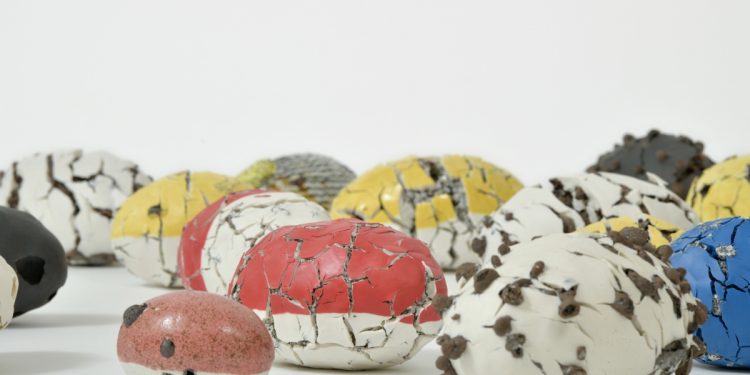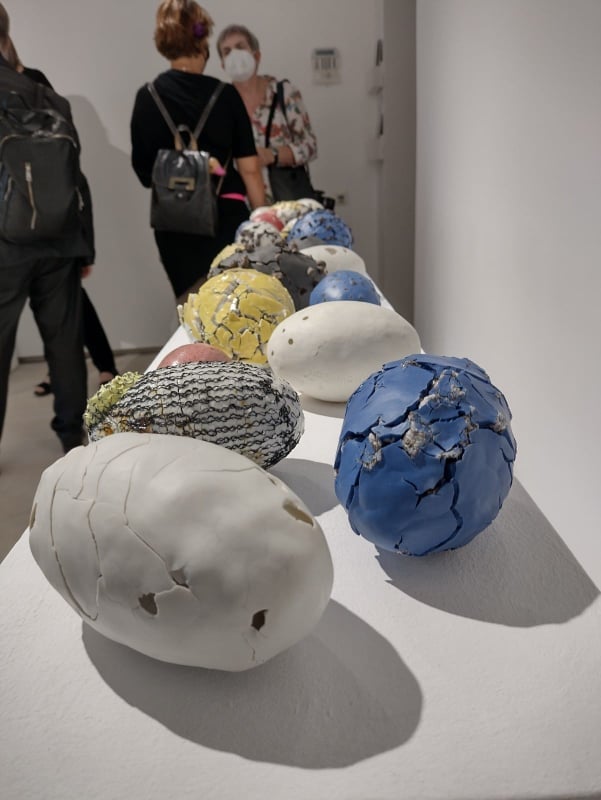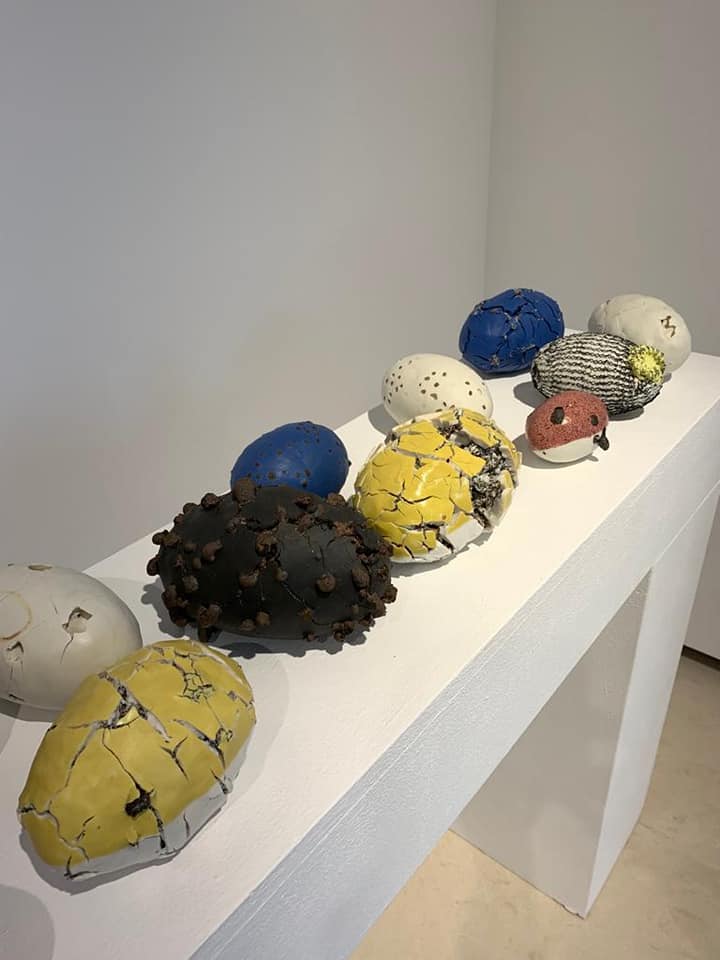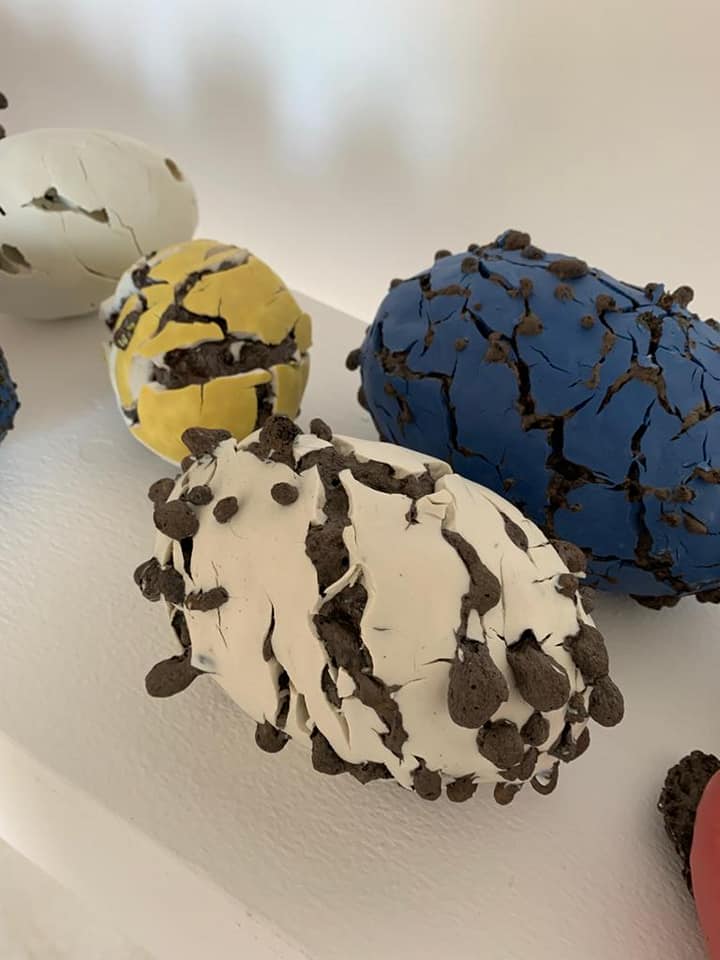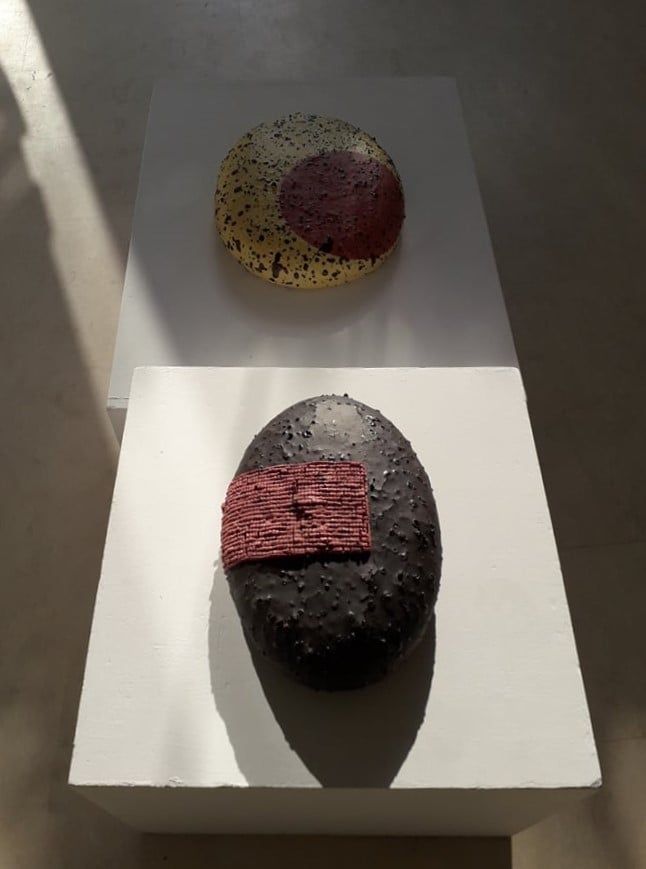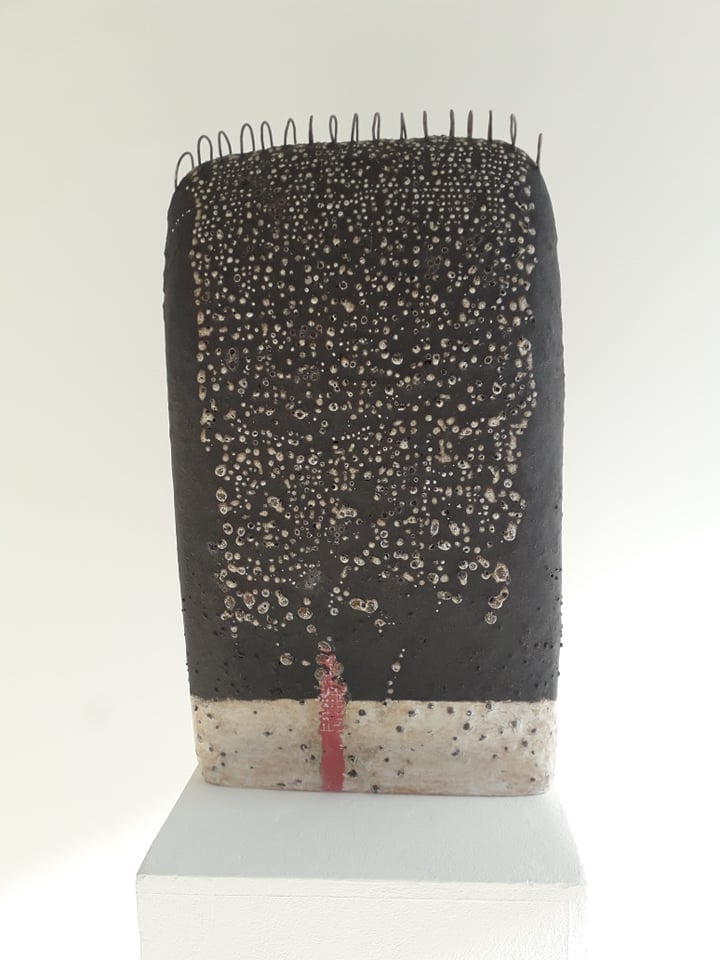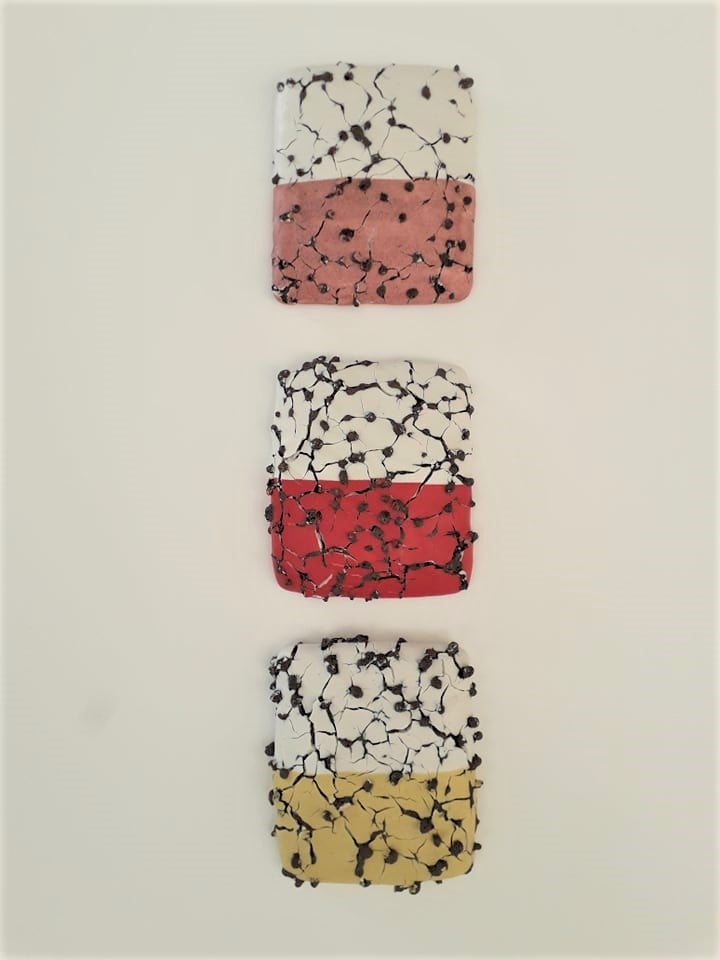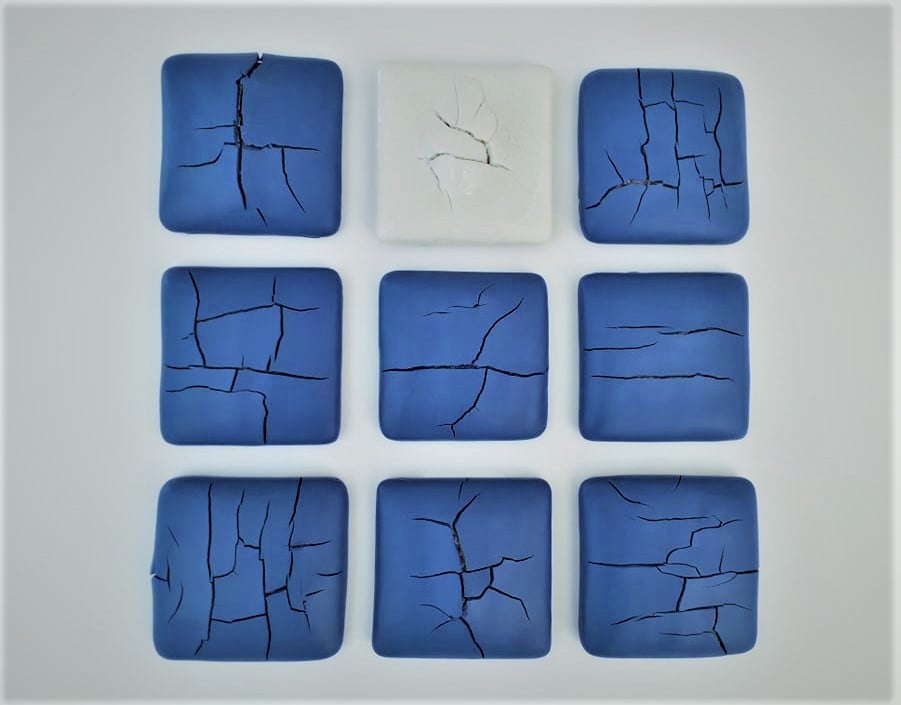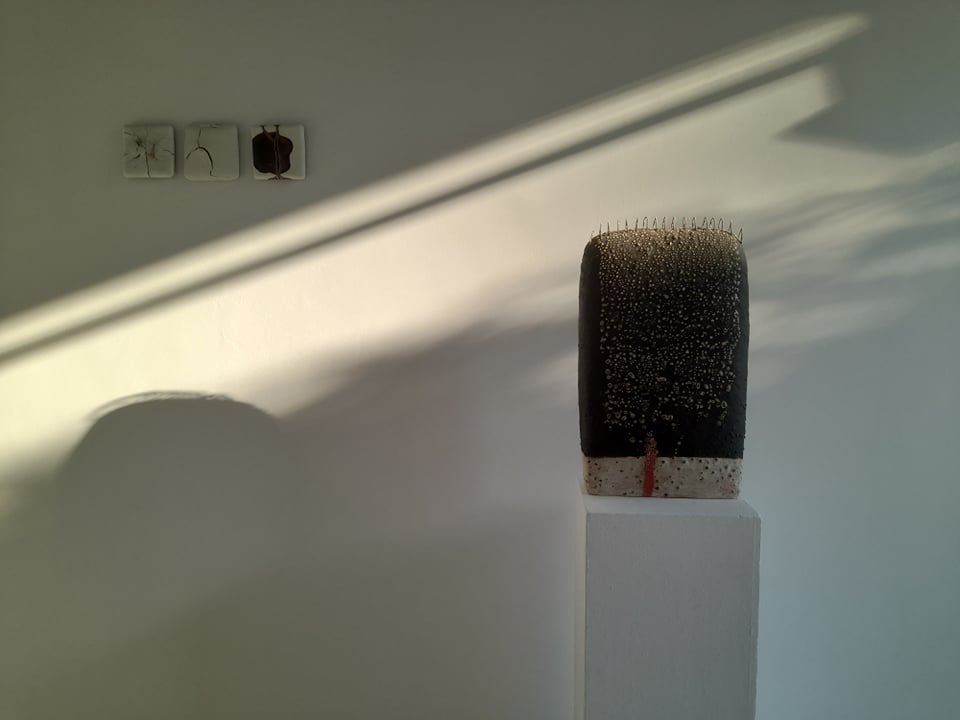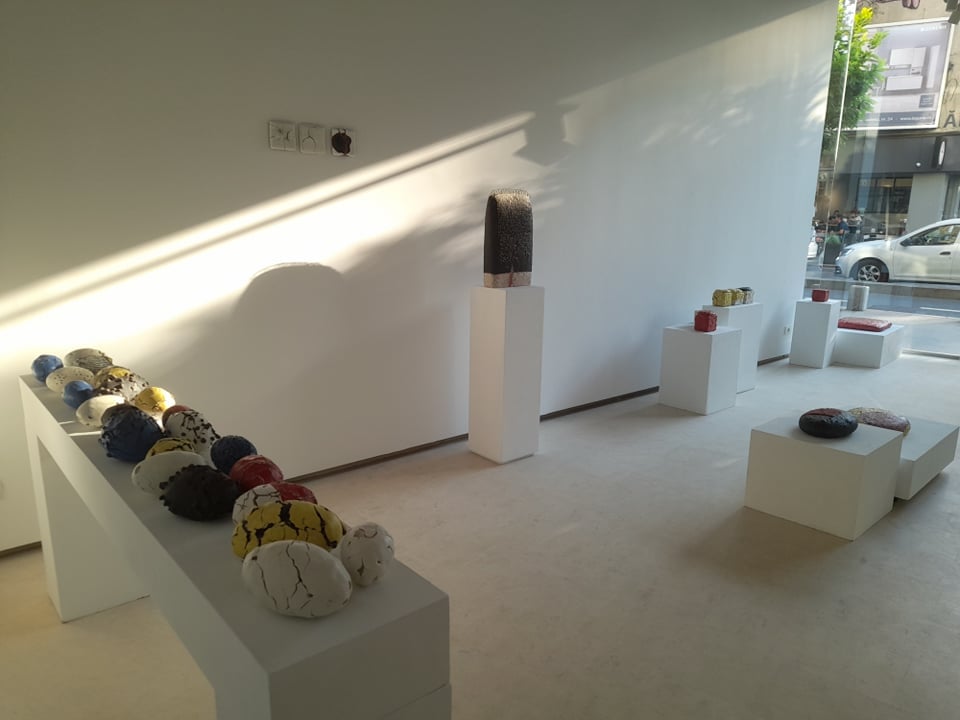An article about Christa Zeitlhofer’s exhibition “On the vulnerability of the surface“, Galateea Gallery, Bucharest, September 1-30, 2021.
Curator: Cristina Popescu Russu. Expert reviewer: Monika Pădureţ
Translation: Flavia Iustina Bosnari
Article by Constantin Hostiuc
It may seem a truism to conceive or think of works of art as “singular objects”. For, not only by definition but also de facto, the author-artist cannot create an identical form twice in a row: right from the seed-thought, the future life-form carries within itself the imprint and substance of uniqueness, of a singular existence, of an unrepeatable destiny. Even though one were to propose the duplication, the “cloning” of the conditions of conception and production, and the morphologies as well, such an attempt would prove impossible. Even as a spectator one cannot see the same work with the same eyes – the experience of the first vision feeds the second and conditions it, so that other sensorial, intellectual, cultural determinations join, to understand and comprehend, the primary, visual reception.
This “condemnation to uniqueness” opens up three fields of discussion:
- concept-incarnation-reproduction, Croce & Read vs. Adorno;
- the one related to idea-ceramics or concept-ceramics, which has to accept the collaboration with the working variations, the result being the individualization of the new object;
- the way we relate to art intended for contemplation vs. participatory decorative art in defining a new poetic concept, a spatial & environmental context, a moment of dialogical culture.
It is good, from the beginning, to realize that, unlike sculpture or oil painting, the newborn ceramic object acquires substance from the intense compression of time, not from its consumption. Its existence, once out of the belly of the oven, is immediate; it does not become complete by additional major intervention: hence the “organicity” of this type of object, its possible comparison not with a cohesive, cultivated hypostasis of a young man, but rather with a bud-child that carries with it the gift or burden of native genius.
Photos: Joe Malina
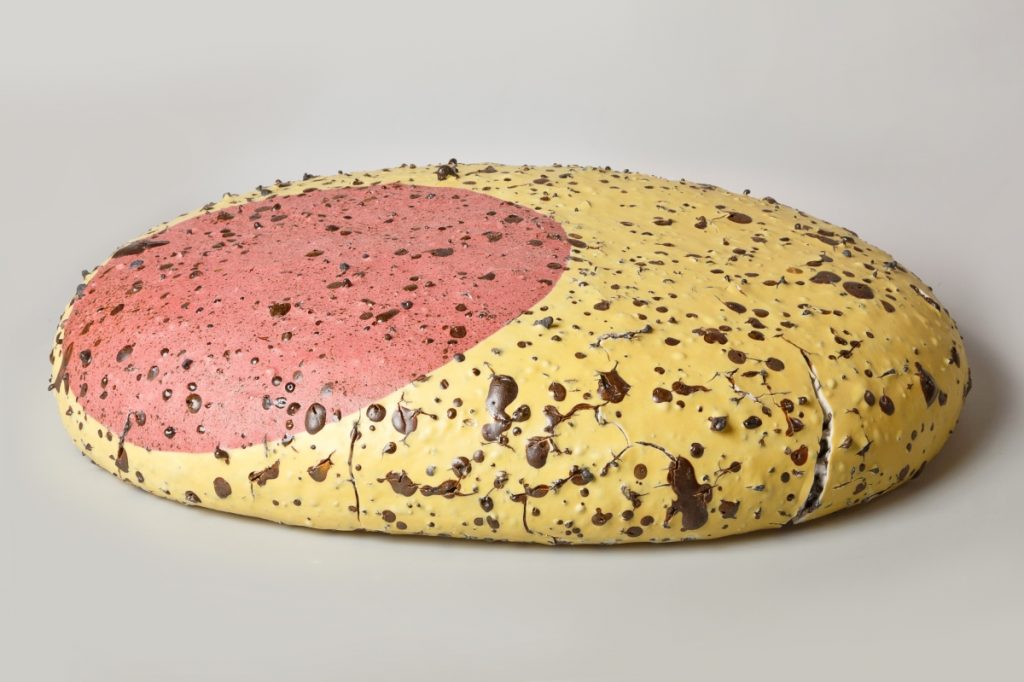
yellow – pink elliptoid, 2020, porcelain, basalt chippings, engobe, 42,0 x 33,5 x 9,5 cm 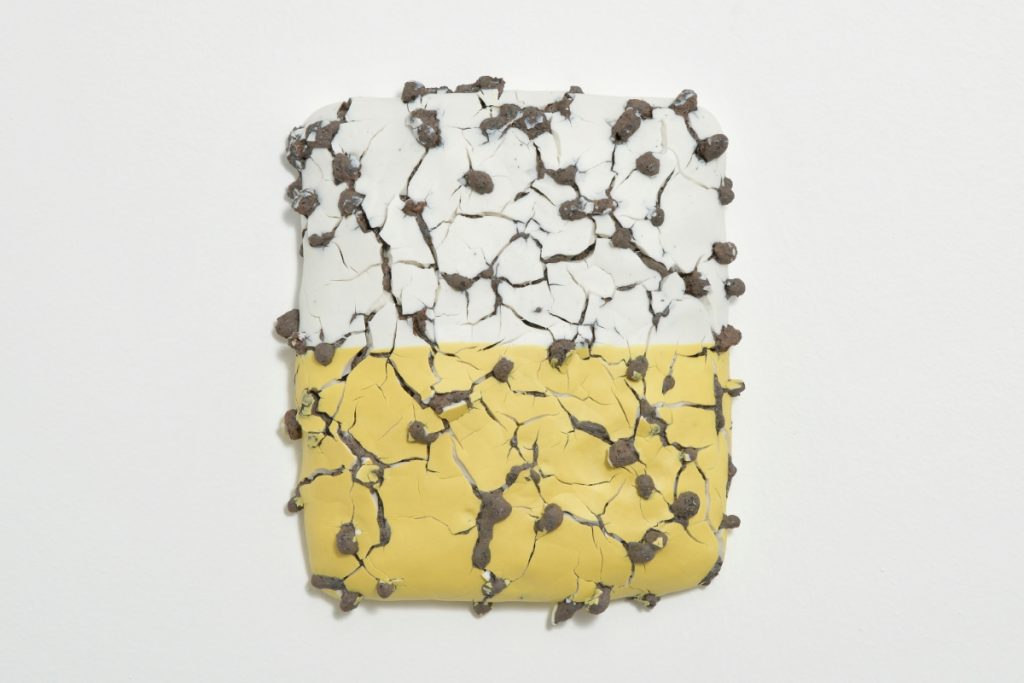
yellow rectangle relief, 2020, porcelain, expanded clay, color bodies, 24,6 x 21,1 x 4,4 cm 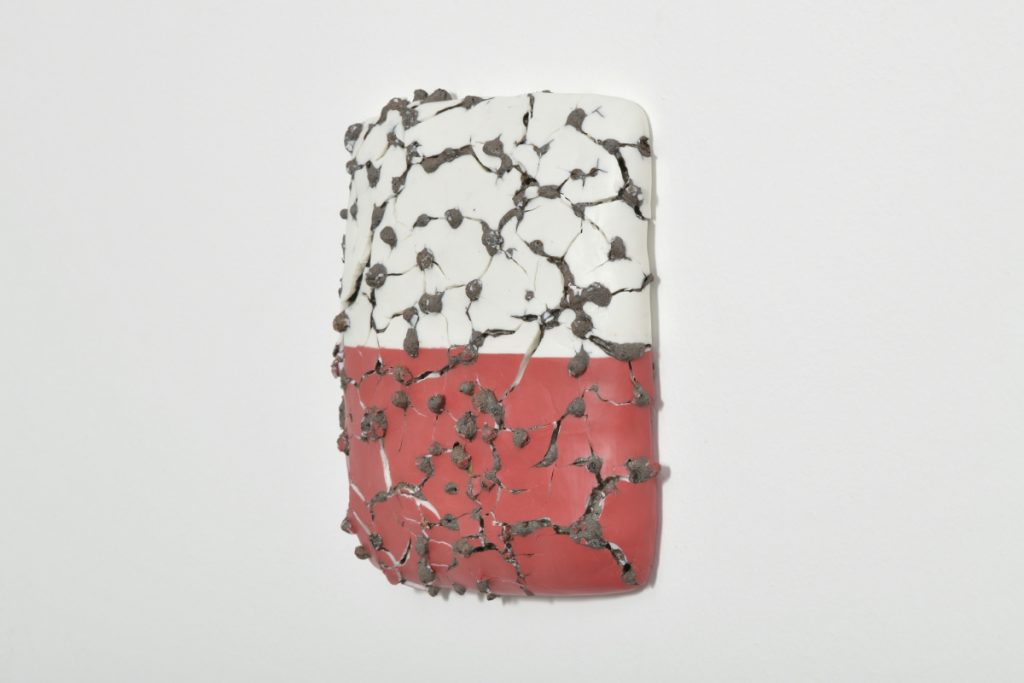
red rectangle relief, 2021, porcelain, expanded clay, color bodies, 24,6 x 21,3 x 4,6 cm 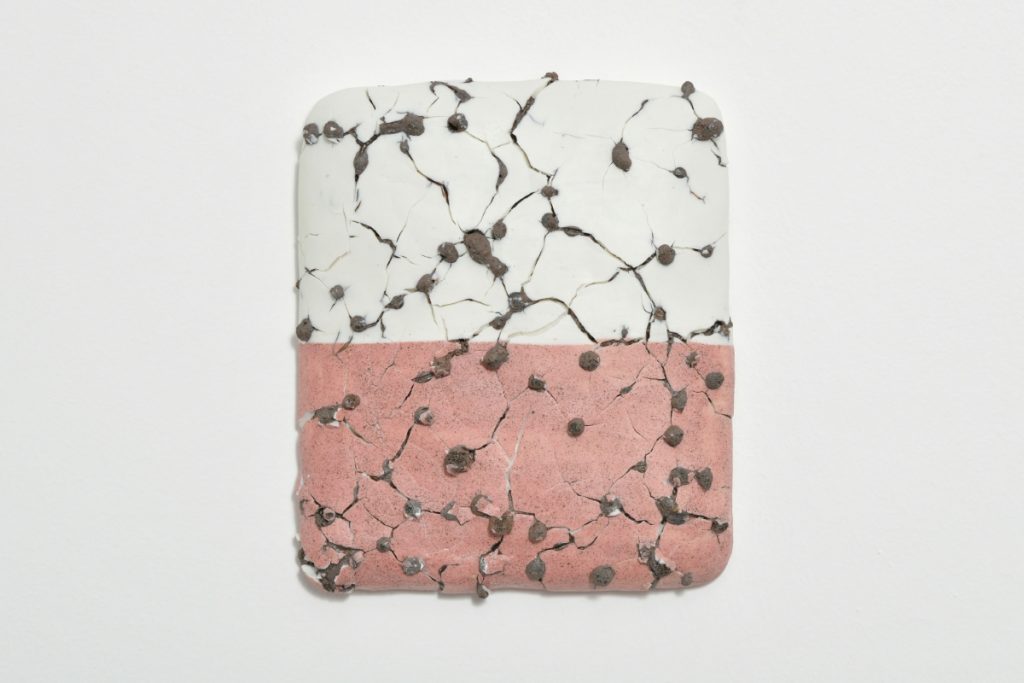
rose rectangle relief, 2021, porcelain, expanded clay, color bodies, 24,0 x 20,0 x 4,0 cm 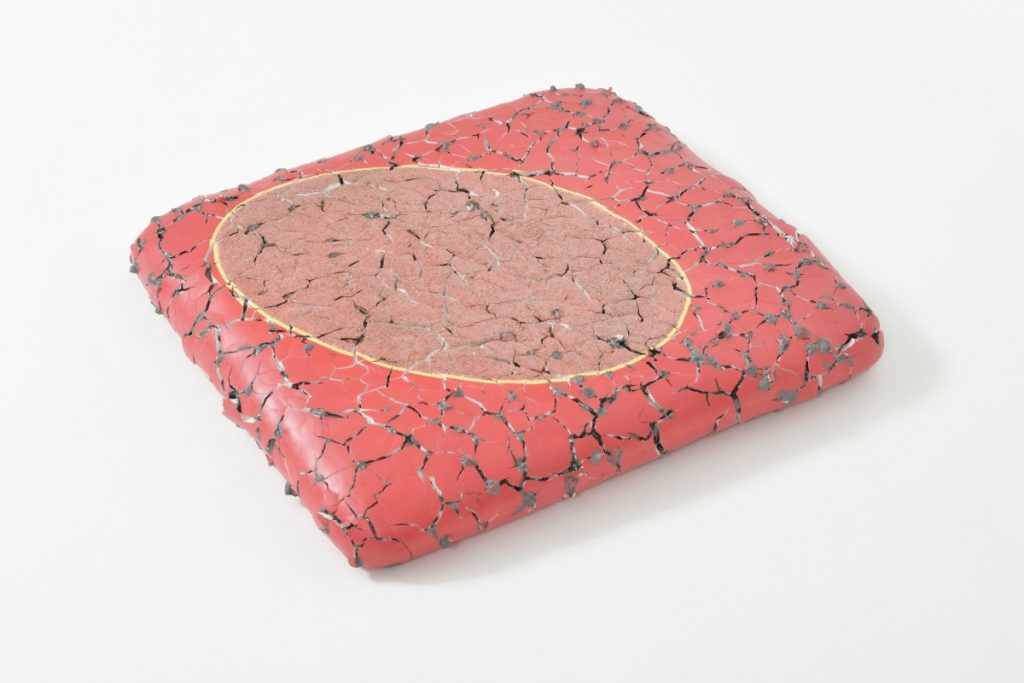
red cuboid, 2021, porcelain, expanded clay, color bodies, engobe, glaze, 49 x 45 x 8 cm 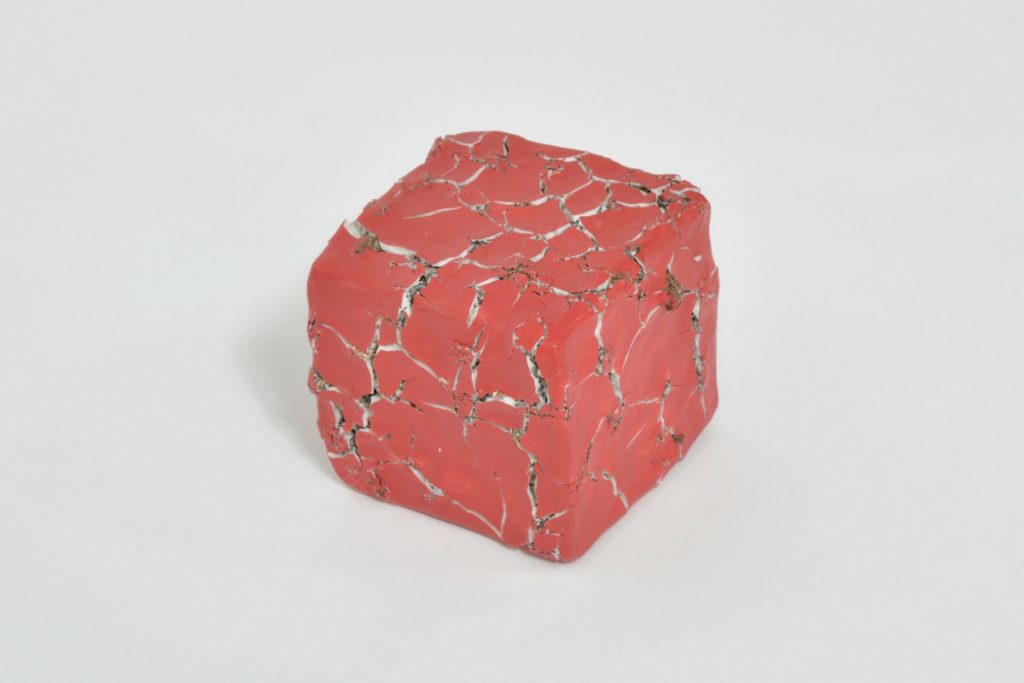
red cube, 2020, porcelain, granite pebbles, color bodies, 11,5 x 11,5 x 11,2 cm 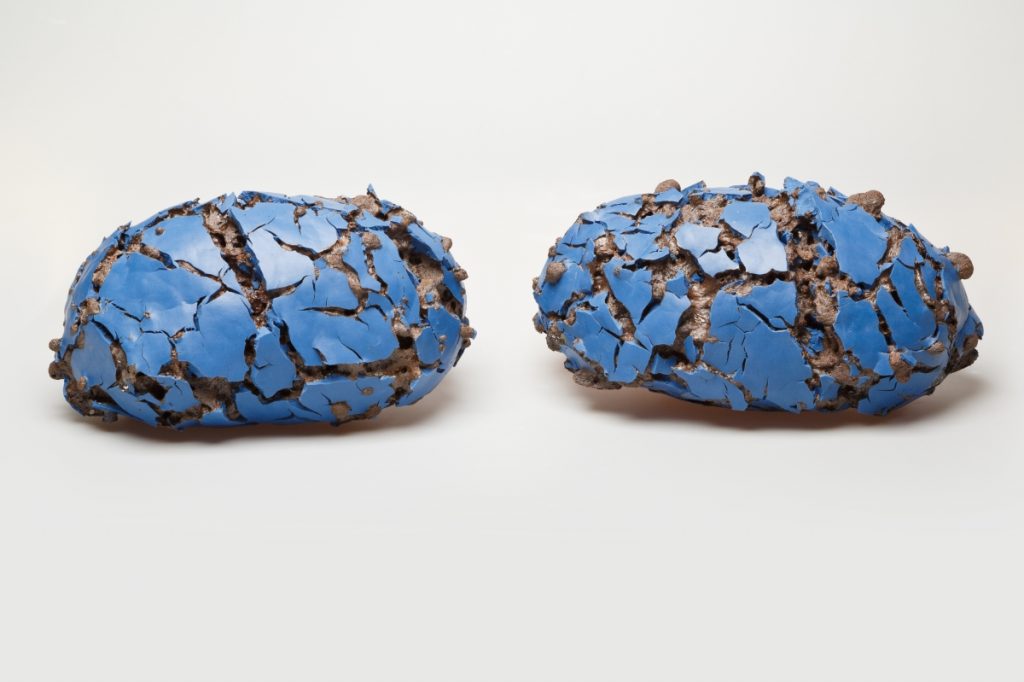
eggs of life l ellipsoids, 2020, porcelain, expanded clay, lava stones 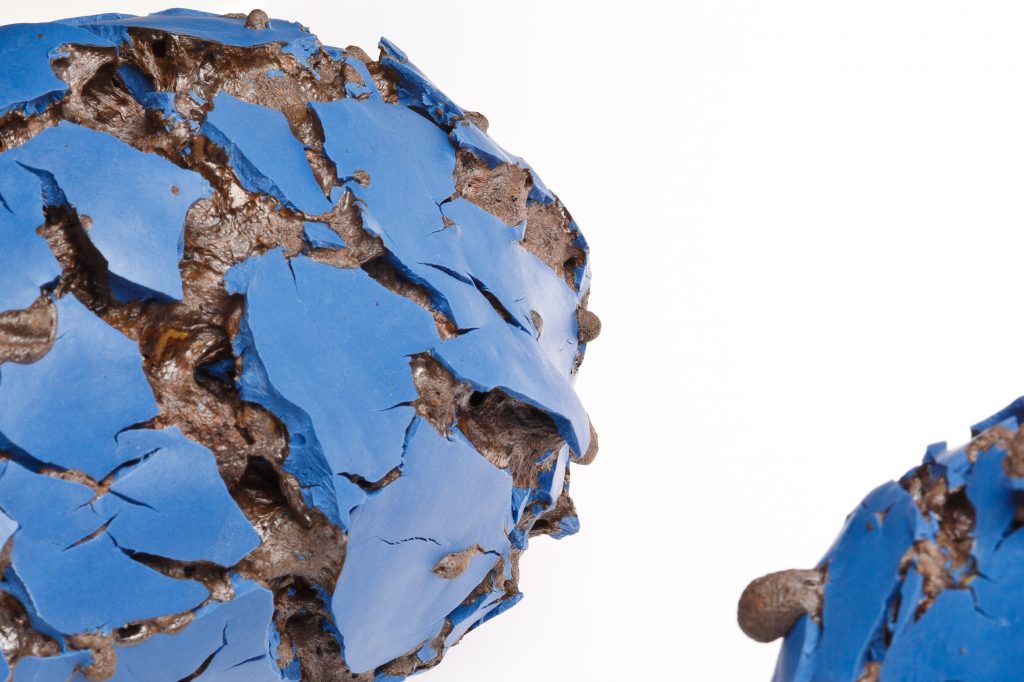
eggs of life l ellipsoids, 2020, porcelain, expanded clay, lava stones 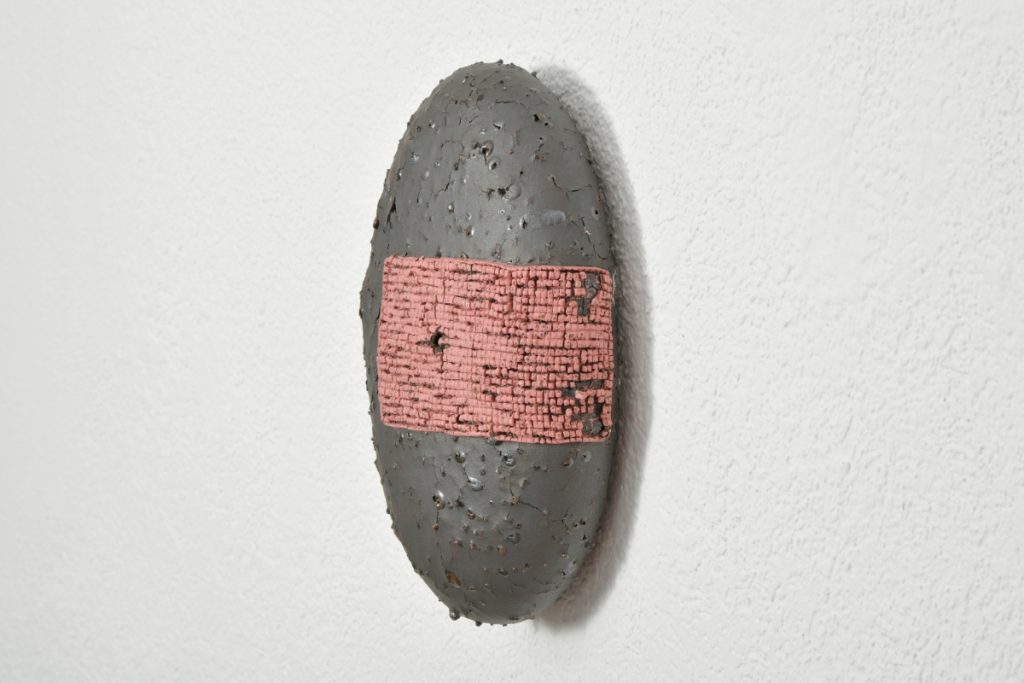
black – pink elliptoid, 2020, stoneware, basalt chippings, fibre glass mesh, engobe, 34 x 23 x 9 cm 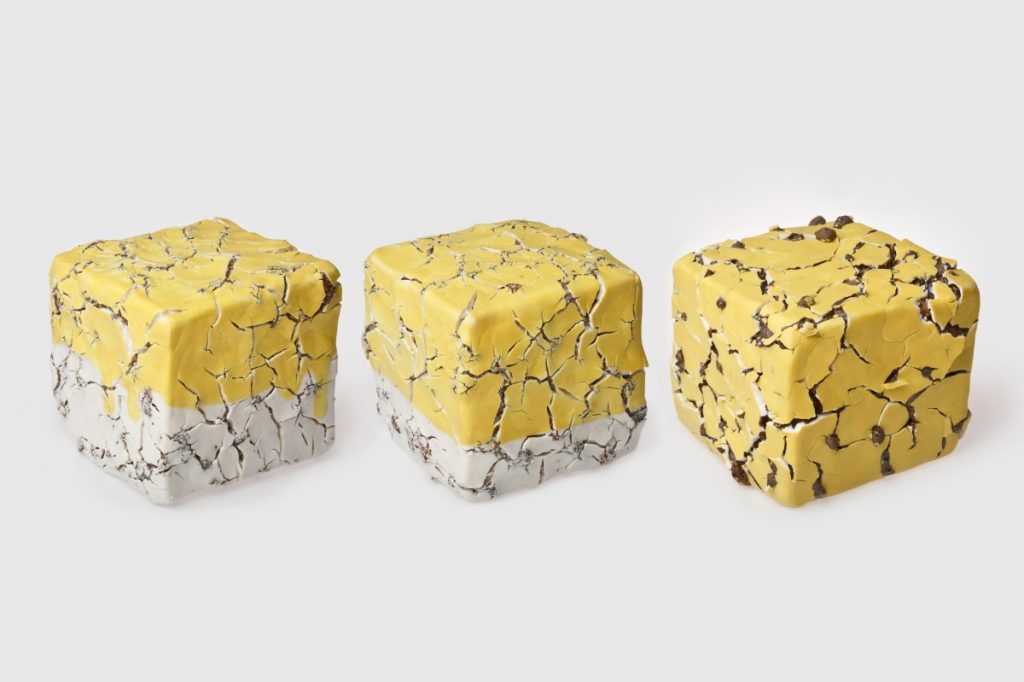
yellow cube l porcelain, 2020, granite pebbles, color bodies, glaze, 13,8 x 13,2 x 11,5 cm
This contains an idea of an intermediate stage of a future fullness of being about which we can wonder philosophically with Jeanne Hirsch or, in line with Herbert Read, we can speculate on the idea of vitality stored in the work of art: were putti, the angel-children of Renaissance art, neutral concepts detached from the burden of reality (the idea was enough, Croce would say), or were they also imagined bodily, either as mere “seen images of Heaven”?
I believe that the beauty of the world arises from ideas, but it lives through its telluric proofs, which are the works of art: I would participate less in the nobility of the world by theoretically mastering a Mozart lied than by repeatedly listening to it, each time a different one. If we are to believe Heraclitus (“one cannot bathe in the same river twice”), then we must at least suspend Adorno for a while: one does not listen to a musical gem again and again just to properly identify the notes and intervals in it, but to enrich the first aural emotion with an extra moment of grace, to add to the initial impression another step of (empathetic) penetration into the common path to the truth (the author’s, the receiver’s). For, as we know, the work of art is an ever-renewed gesture in search of truth.
As for the truth of ceramic art, I venture to believe that it lies in the physical celebration of a fine “skin” that shelters the weight of an idea-translated-into-form. I expect Christa Zeitlhofer’s symbolic ovoids (egg-signs of the pre-cosmos? eggs-of-difference? cosmic-eggs? mother-eggs?), of a physical dimension that clearly separates them from the animal order, while evoking the human-fetal one instead, weigh in the order of the magnitude they reveal to us.
And, precisely because this is so, the natural sensation of “determining” the aesthetic data of the object reassures you: you are in the realm of creation, of an abstraction with which you can have a dialogue.
The same aspect of cultivated intimacy is also fulfilled by the craquelures – they suggest a concrete, “sincere” relationship with the burning time of baking, which, in the artist’s works, can be “just right”, when it melts the surfaces perfectly, or “excessive” when it makes the form want to break out of its mold. (As far as I am concerned, the author’s deference to the exact sciences is more apparent in this watchful, calculated attention to the reaction & maturation times of objects, rather than in the clarification of their cuboid or ovoid morphologies).
What these manifest and fundamentally particular lines of tension reveal are chromatically contrasting inner substances that make you wonder about their selves, their intimacy: why do some gray “eggs” explode into red veins and others into brown “wounds”, leaving white, black, gray “flesh” visible?
Exhibition views
The surfaces, shapes, and colors of the decorative “spots” help the eye to wander freely through the exhibition or to linger in the biscuit assemblages/structures, reacting to the ambient light with their misty-milky iridescences, in a subtle game of searching the “surroundings” of the matters. To this “capture of attention” that starts from the shapes and cracks of the skin-earth, which tactilely excites the imagination, I wish I could add? oppose? an olfactory clue: one germ-egg might have smelled of clay from the Nile Valley, another one of nesting soil from the Danube Delta. Differences, let’s accept, are, even mathematically, more numerous and, maybe, more fruitful conceptually and aesthetically than similarities, the same way that possibilities of generating living forms outnumber natural births. Even the DNA of the arts is changing…
I won’t stop to say that in such a poetic perspective of matches/equivalences, a potentially-germinative one, Christa Zeitlhofer’s hatching eggs evoke an implosion of cosmic life lived amply, innerly and seriously, twin signs of a micro-elegy: “My sadness can hear the unborn dogs / the unborn people barking at”. (Nichita Stănescu, Song). There, as well as here, there is a discreet, barely touchable quivering of what is to come, a teasing in surrounding future promises. A metaphor of happy unrepeatable births/begets is the “maternity-room” of the Galateea Gallery, adorned with these “families of objects” that bring together the auroral and pulsating seeds of the living/aliveness.
I like to believe that there are still female ceramic/potter artists in the world who have immersed themselves in Mircea Eliade’s writings, who know and accept the implied fecundity of the analogy between the kiln and the mother’s womb, artists to admit that they have experienced, throughout the gestation of the “adornment” destined to (ful)fill the world, the same sublimated joy that they experienced, even if only spiritually/imaginatively, as “mothers”, carrying and giving birth to little fairies and handsome prince charmings who will add to the beauty of the world… Artistically speaking, Christa Zeitlhofer is one of them.
Visit Christa Zeitlhofer’s website.
Constantin Hostiuc is an art historian and critic.
Galateea Contemporary Art is an art gallery based in Bucharest. The gallery’s broad scope is promoting Romanian contemporary ceramics in an international context, by encouraging partnership and collaboration with similar galleries and international art centers.
Featured photo: Christa Zeitlhofer, eggs of life (group), 2014-2020, porcelain, expanded clay, lava stone, color bodies, stoneware, variable dimensions


